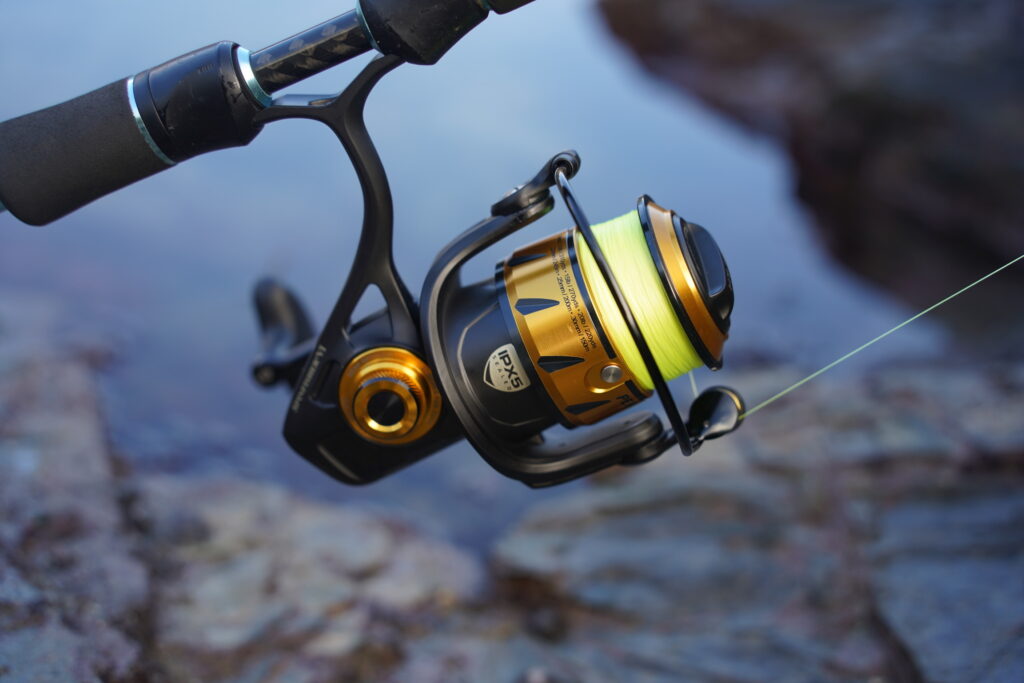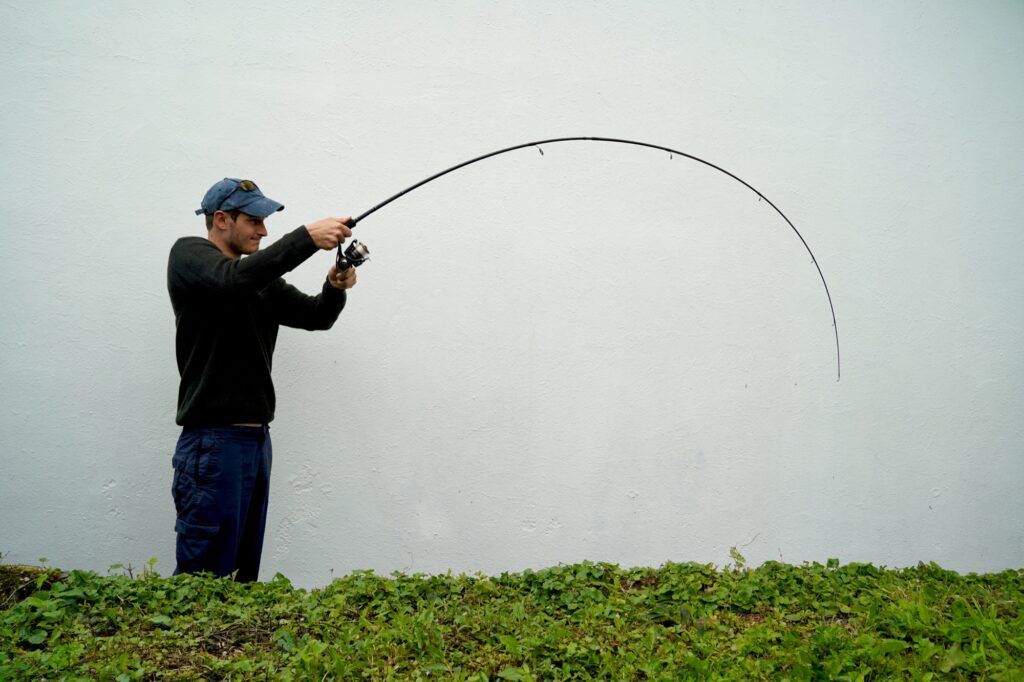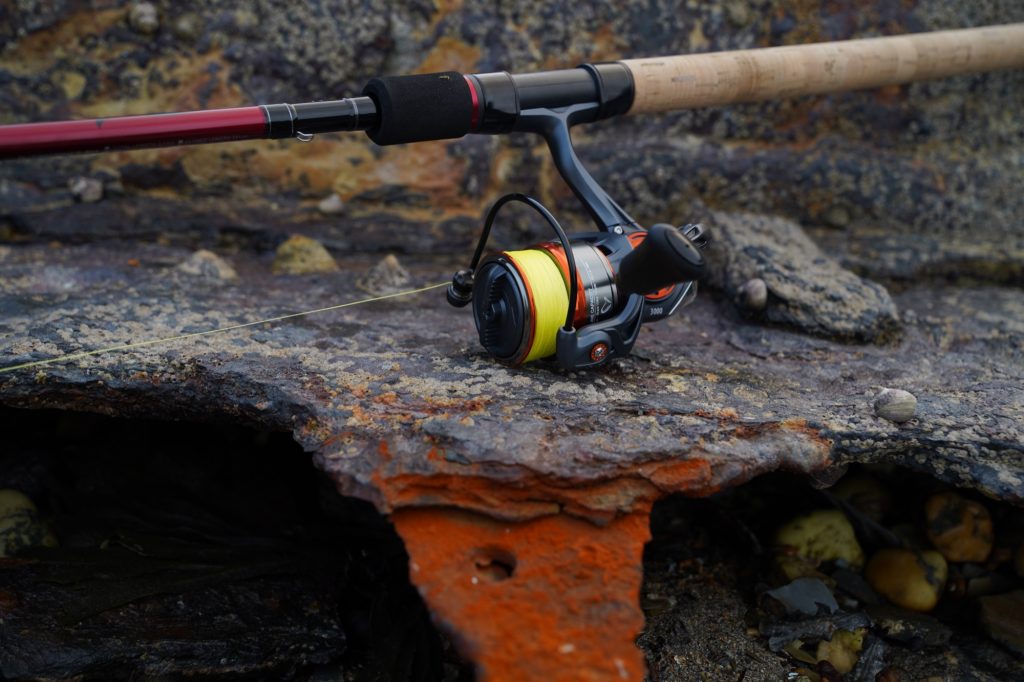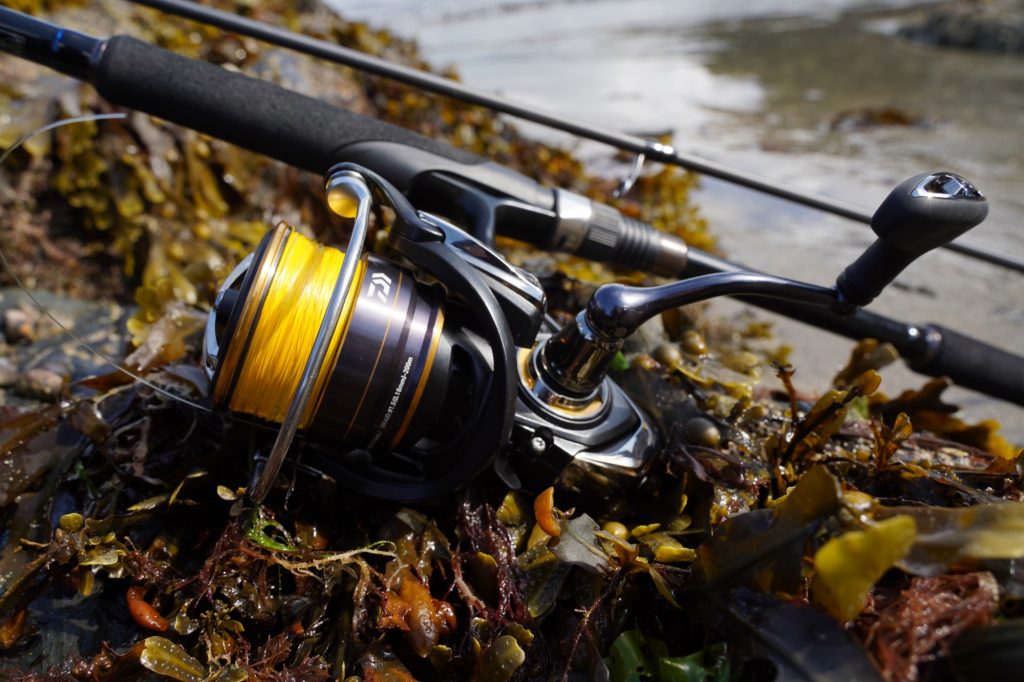Daiwa BG Mag Sealed 3000 & 4000 Review
This is a review of the Daiwa BQ Mag Sealed, one of the smoothest and most impressive reels I’ve ever fished with. We’ve found the reel to be of excellent quality – but readers should note that it’s heavier than most other spinning reels for its size, so you may want to size down or avoid pairing with a shorter lure rod. This is an unsponsored article, and the following is our opinion.
Fishmag is reader-supported and earns commissions from affiliate sales, such as from amazon.

Daiwa BQ Mag Sealed 4000 vs 3000
We used the 3000 size on rods between 8.5-9ft. All of these were Japanese designs or from Japan. The Nebular to 35g, the Tailwalk to 20g and the Major Craft Ceana to 30g. The 3000 size felt sleek on these rods, but was the correct size in all cases for us. With many other spinning reels, I would probably bounce up to 4000 size with the Ceana and the Nebular in some cases. However, with line lay like this, you don’t need a larger spool to avoid trouble and the reel is heavy enough as it is in the 3000 size.
We have used the 4000 size Daiwa BG Mag Sealed on the TAILWALK HITIDE SSD 86 (8ft 6″) 7-35G. It felt noticeably oversized. It wasn’t a good match. This is because the 4000 size weighs a whopping 435g. That’s a lot more than the BG MQ by the way, which is only 301g in the same size. That’s why dropping down to the 3000 size seems to be the way to go for most regular modern bass fishing set ups.

The line lay was completely perfect without adjustment
We used Daiwa J Braid 8 strand on the reel and had perfect line lay immediately with no adjustment. That is what I’d expect at this price, but it’s not always what you get with Penn for instance. Sometimes those Penn reels can require adjustments before the line sits perfectly flat.

The max drag is 8kg and this reel was built to handle bigger fish than we will probably ever catch with it in the UK
The BG Magsealed is a reel Daiwa say is for ‘power spinning’. Essentially, these higher end reels are built for fishing bigger lures and catching bigger fish than we actually need in the UK. This is why you can definitely buy a mid-range spinning reel and have no limitations as long as you’re not fishing in surf or from a kayak or boat.

What does ‘Mag Sealed’ mean?
In practical terms, it means the reel is protected from saltwater getting inside. But there is much more to it than that – it’s actually seriously impressive engineering. The term “Magsealed” is derived from the use of magnetic oil, originally developed by NASA. Here’s what “Magsealed” entails:
- Magnetic Oil: At its core, Magsealed technology employs a magnetic fluid. When exposed to a magnetic field, this fluid changes its structure, becoming more viscous and creating an effective seal.
- Protection from Elements: The primary purpose of the Magsealed technology is to prevent water, salt, and other contaminants from entering the reel’s critical areas, such as the main shaft and line roller. This is especially useful for saltwater fishing where salt can quickly degrade the internal parts of a reel.
- Durability and Smoothness: By keeping contaminants out, Magsealed reels tend to have a longer lifespan and maintain a smooth operation over time. The magnetic oil not only acts as a barrier but also as a lubricant, ensuring the reel operates smoothly.
- Maintenance: With the Magsealed technology, reels require less maintenance since the internals are better protected from wear and tear, and the corrosive effects of elements like saltwater.
So basically, Daiwa’s Magsealed technology extends the life of the reel and keeps it running smoothly, even when exposed to sea spray out on boats, the odd dunking from a kayak or being used while surf fishing.

Is the Daiwa Mag Sealed salt water proof?
Despite this high level of saltwater resistance, we should still avoid getting the BG Mag sealed wet, because there’s only so much it can take. It’s not a reel that is designed to be submerged intentionally, it’s just that if it happens once in a while, you have a lot of resistance against it. We often dunk our reels in salt water as part of the testing, but due to the price of the reel we didn’t do that in this case!
If you’re going surf fishing actually in the surf waist high and routinely dunking your reel rather than just getting it splashed now and then by the odd wave, then you may need a fully saltwater proof reel instead. If you need that, I’d love to go fishing with you as nobody fricken’ does that apart from a few nut jobs so please get in touch [email protected]
What’s the difference between the BG Mag Sealed vs BG MQ?
The BG Mag sealed shouldn’t allow saltwater inside the reel at all, and the ball bearings are sealed so that saltwater can’t touch them – in theory. The BG MQ is not mag sealed, but it is lighter and has some other design features the Mag sealed lacks.
Traditionally, spinning reels have a main body and a separate side plate to house the main gear. In Monocoque (MQ) designs, the single-piece body serves as both the frame and the housing for the gear. This allows for a larger main gear to be used without increasing the reel’s overall size. This results in improved power, torque, and durability. All this while the reel still looks sleek and unassuming…
This is why such a sleek little reel can be used with a heavy (but very light build) jigging rod offshore and tolerate immense pressure from bigger fish. The elimination of the side plate also helps with the reel’s water resistance, as there are fewer points for water and contaminants to enter the reel’s inner workings (more on that later).
Feel free to skip over this, but if you’re interested, the term “monocoque” actually comes from aviation and automotive design, where it refers to a structural approach that enables an object to support loads through its external skin, rather than using an internal frame or chassis. In the context of spinning reels, Monocoque Technology allows for a single-piece aluminum body that not only enhances the reel’s strength and rigidity but also allows for more efficient use of space.
Penn Spinfisher Review
Penn Spinfisher Review This is a review of the Penn Spinfisher, one of the reels…
SUFIX 131 Braid Review: “A whole different beast.”
SUFIX 131 Braid Review: “A whole different beast.” A complete guide to Sufix braids This…
Shimano FX Rod & Reel Review
Shimano FX Rod & Reel Review This is a review of the Shimano FX rod…
Shimano Catana Review
Shimano Catana Review This is a review of the Shimano Catana. To review this reel,…
Savage Gear SG2 Reel Review
Savage Gear SG2 Reel Review Note: since writing this review, we do not recommend these…
Penn Pursuit IV Review
Penn Pursuit IV Review Let’s look at the pros and cons of the Penn Pursuit…
Daiwa Ninja Spinning Reel Review
Daiwa Ninja Spinning Reel Review This is a review of the Daiwa Ninja. We had…
Daiwa Legalis Review
Daiwa Legalis Review This is a review of the Daiwa Legalis. We applied a series…
The best braided fishing lines, ranked
The best braided fishing lines, ranked We look at the best braids, from the budget…
Shimano Sedona Review
Shimano Sedona Review This is a review of the Shimano Sedona. To review this reel,…










